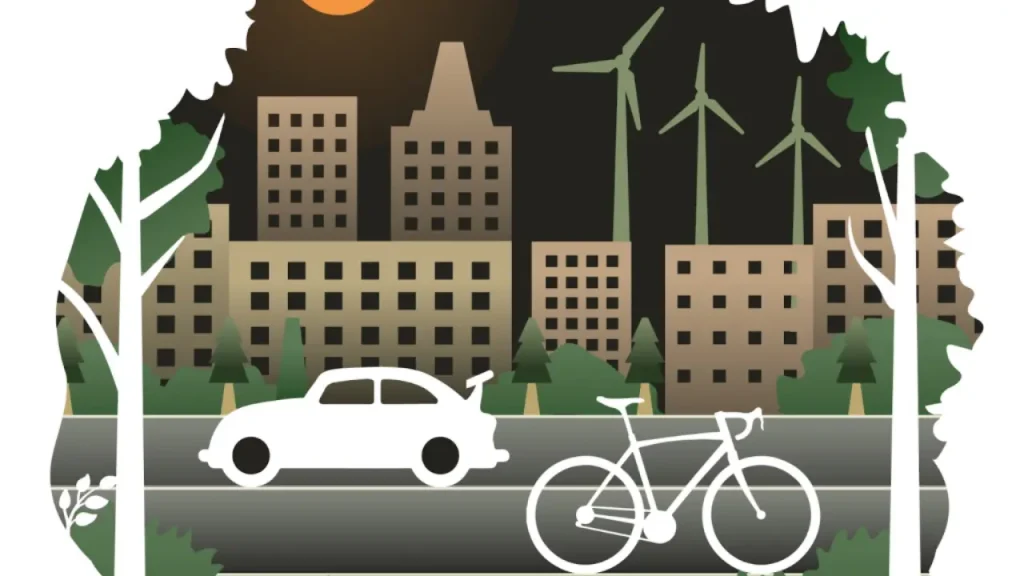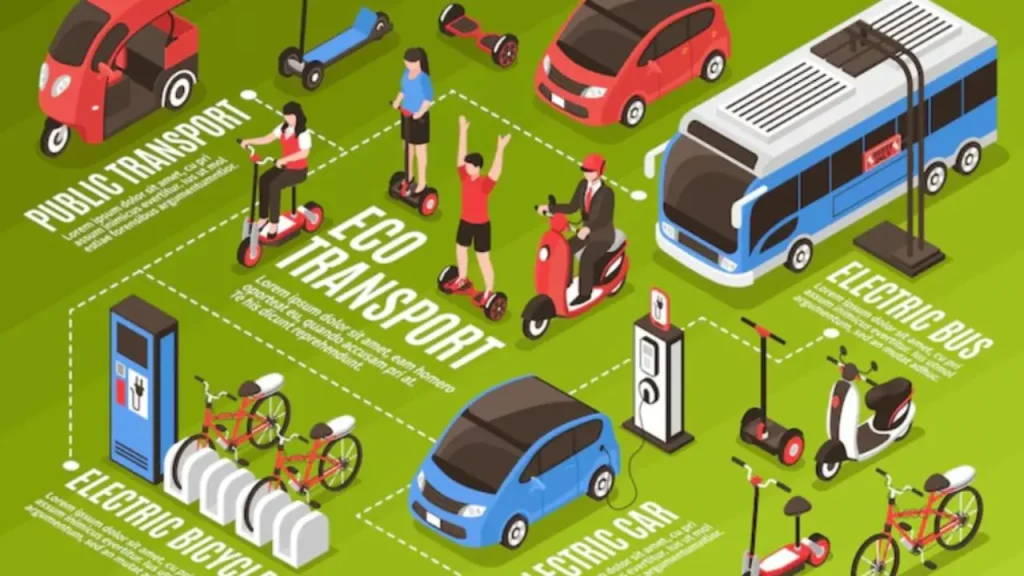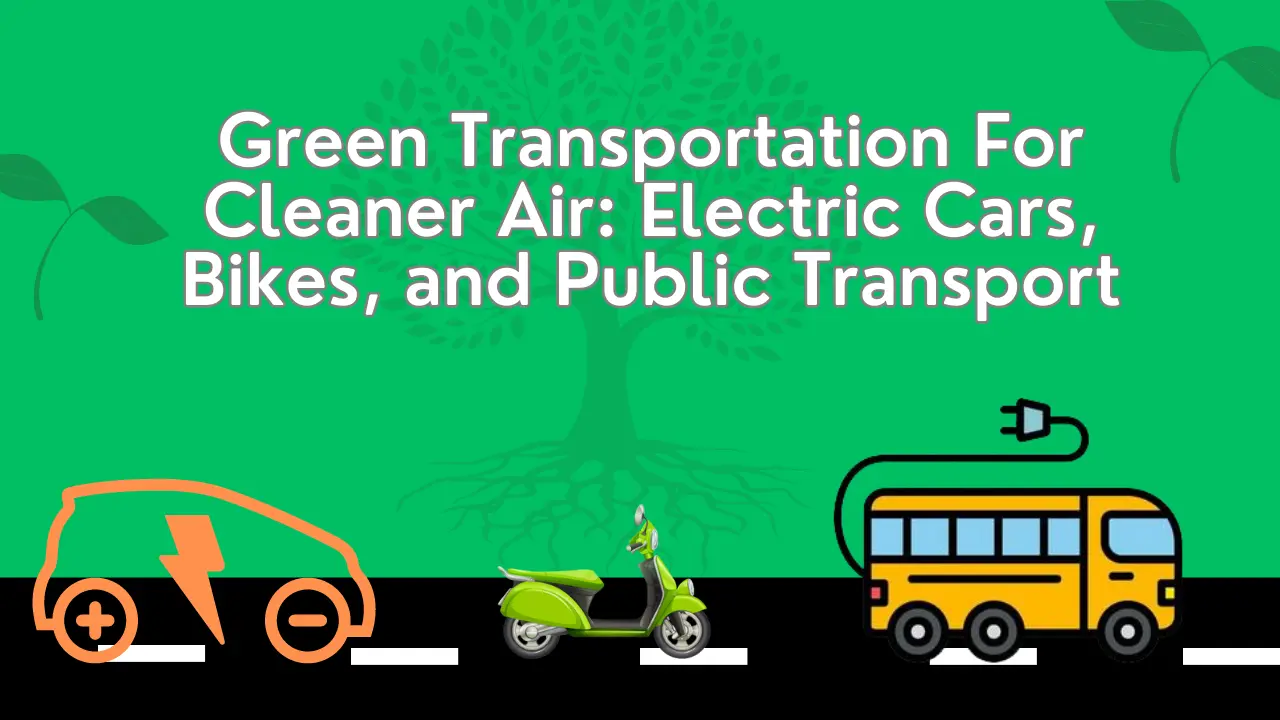A major problem for the environment and human health, transportation is one of the main causes of air pollution. Green transportation has gained popularity as people’s awareness of the negative consequences of conventional transportation systems increases. Green transportation alternatives are ones that lessen their negative effects on the environment and support sustainable living.
Electric cars:

An excellent instance of environmentally friendly Green transportation is electric automobiles. These electric cars emit a lot less pollution because they have electric motors instead of gasoline engines. Electric automobiles are not only cost- and energy-effective, but also environmentally friendly. Devices can be charged at home or at public charging stations and require less upkeep.
Bikes:
Another environmentally friendly means of Green transportation is biking, which has many advantages. Cycling encourages physical activity and enhances general health in addition to being an environmentally friendly means of green transportation. Bikes are an accessible and economical mode of transportation that can also help to minimize traffic congestion.
Public Transport:
Green transportation also includes a significant portion of public transport, such as buses and trains. By eliminating the usage of personal vehicles, consumers can lessen their carbon footprint by taking public transportation. Using public transportation also helps to lessen road congestion, which can improve air quality and cut down on time spent stuck in traffic. Furthermore, using public transit is frequently less expensive than driving a personal vehicle.
Hybrid Vehicles:
A combination of an internal combustion engine and one or more electric motors, which draw power from batteries, is used by hybrid cars to generate electricity. It is not possible to plug a hybrid automobile in to charge its battery. The internal combustion engine and regenerative braking work together to charge the battery instead.
Hybrid automobiles produce incredibly low levels of greenhouse gas emissions; these reductions can range from 26% to 90% compared to those of conventional vehicles. These vehicles offer excellent mileage and may be advantageous for your company.
Walking:
There are no greenhouse gas emissions associated with walking. You can cut costs by walking to nearby destinations. It aids in mental cleansing and necessitates no preparation. Buy supportive walking shoes and shoe inserts if you need more support. To benefit the environment, take a walk with family, friends, or by yourself.
Sustainable Mobility and Green Transportation:
The only way to meet the transportation needs of the rapidly expanding urban population and freight in megacities is to develop a sustainable mobility and environmentally friendly transportation system, and doing so is a need.
There are various definitions for sustainable and green transportation as a result of the fact that many organizations and professionals defined it. According to these criteria, the author’s definition of sustainable and green transportation is any mode of transportation that considers the needs of humans and provides a variety of inexpensive, safe, and efficient modes of transportation. Additionally, it uses recycled or renewable energy instead of fossil fuels and has less effect on the environment.
Benefits of Green Transportation:

Environmental, health and financial advantages are just a few of the advantages of green transportation. Some of the main advantages of employing green transportation are given below.
- Green transportation results in fewer or no greenhouse gas emissions.
- Supporting environmentally friendly modes of transportation including electric motorbikes, carpooling, and cycling will significantly save costs.
- The health of people is not harmed by the emissions of green forms of transportation. Therefore, using green transportation will enhance people’s quality of life and health.
- The number of vehicles on the road will be reduced by encouraging green transportation methods including bicycles, carpooling, and electric motorcycles.
- The demand for fuel and gasoline will be reduced by using greener modes of transportation.
Strategies and Methods towards the Green Transportation:
In order to have a sustainable urban transportation system, the system’s components must be strengthened and addressed holistically. Mobility, accessibility, affordability, social justice, efficiency, safety, security, convenience, low carbon, comfort, and people- and environment-friendliness are just a few of these traits, according to Pardo.
Sustainable Public Transportation:
Many individuals who lack access to personal vehicles rely heavily on public transit services. The availability, dependability, and safety of public transportation services must all be guaranteed. Examples of excellent, sustainable public transportation networks include the following:
- Bus Rapid Transit (BRT) is a transportation method that is favored in many nations because of its reasonable implementation costs and speedy implementation time. BRT offers a swift, secure, and dependable service to all societal levels.
- Due to its efficiency, affordability, and environmental friendliness, subway and light-rail systems are relied upon by a significant portion of commuters.
- The metro is a popular mode of transit for many commuters, but its construction is expensive and time-consuming. Although it is expensive to maintain, there are substantial long-term economic, social, and environmental benefits.
- Walking and cycling are strongly encouraged as non-motorized modes of transportation since they promote better health and produce no harmful emissions.
Conclusion
As more individuals become aware of the negative effects that conventional modes of transportation have on the environment and the general public’s health, green transportation solutions are growing in popularity. Sustainable transportation options include electric vehicles, bicycles, and public transportation, each of which has its own advantages. We can lessen our environmental effects and raise our standard of living by adopting sustainable transportation into our daily lives.



